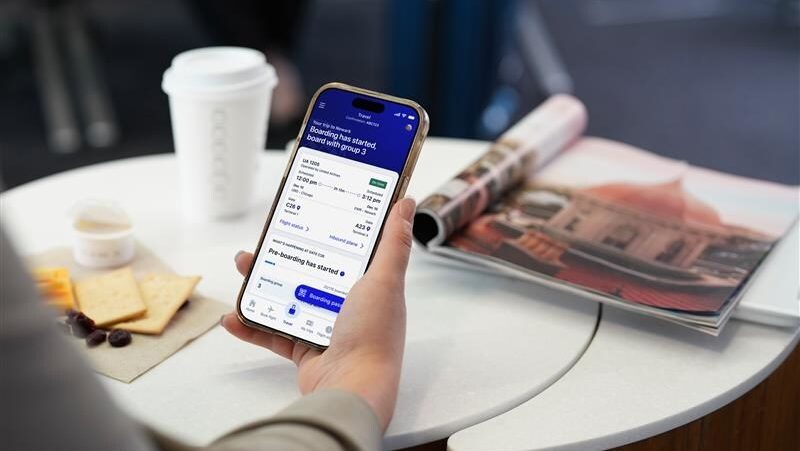If you’re looking to explore Europe by car, whether you’re driving in France or heading to sunny Spain, there are a lot of things you need to know before you set off.
There can be a number of different driving laws to driving around Europe, that’s why we’ve put together a handy guide to explain everything you need to know about going on a four-wheeled adventure to our European neighbours.
Documents needed for driving in Europe
Besides your full driving licence, there are a number of other documents that you will need to take with you when driving in Europe. These include:
- Proof of vehicle’s insurance
- Proof of ID, such as a passport
- V5 registration document
- Travel insurance documents
- European breakdown cover policy documents
- Crit’air sticker if driving in France
- International driving permit (for the necessary countries)
These will need to be carried with you when you drive, just in case you are pulled over by police.
What equipment do I need in a European driving kit?
When driving in Europe, you will need the following items due to certain laws in certain countries.
Global Health Insurance Card (GHIC)
Motorists driving in Europe will need to pack a Global Health Insurance Card (GHIC), which replaces the old European Health Insurance Card (EHIC).
A GHIC offers similar protection for travellers as that afforded by the EHIC when a UK resident is in the EU on a temporary stay, for business or pleasure.
Your GHIC does not cover you in Liechtenstein or Switzerland, which is worth bearing in mind in case you delve further into Europe.
GHICs can be obtained through the NHS website and are free of charge. Travellers are advised to apply at least two weeks before their trip.
This shouldn’t be seen as a replacement for regular travel insurance, which you should take out for protection in case of emergency illness or injury.
Car insurance
When driving in Europe, it’s always best to double-check your car insurance covers you whilst you are abroad, as you may not have a policy that allows overseas travel.
If your car insurance does not protect you when driving abroad, you will need to get European cover.
European breakdown cover
Our breakdown cover is available from £99 a year and provides you with 90 days’ breakdown cover while driving in Europe, in any one calendar year. We can arrange roadside recovery or a reliable home repair service, whether your car or van breaks down in the UK or Europe.
Check your satnav
It’s illegal in several EU countries to use satnavs or other electronic equipment that alerts you to speed enforcement cameras. If yours provides such alerts, it’s recommended you switch them off before you enter Europe.
Reflective jackets
You can be fined for walking on a road or on a hard shoulder if you are not wearing a reflective jacket, should you breakdown. Therefore, you should consider taking reflective jackets for yourself and any passengers along with you when you travel.
Warning triangle
A warning triangle is always a good thing to carry in your vehicle, like reflective jackets, they are compulsory to have for foreign-registered cars in certain countries.
Headlamp beam deflectors
Deflector stickers are needed to prevent dazzling oncoming drivers. You can buy deflector stickers from most car shops and, more expensively, at ferry ports and the Eurostar terminal. You may also be able to adjust the beam manually.
UK sticker
If your vehicle is registered in the UK, you will need a UK sticker on your car. This used to be a GB sticker, but has since changed in September 2021, partly due to Brexit.
This is so local law enforcement can identify where the vehicle has come from.
Whilst it’s not compulsory to have one in every European country, it’s a good idea to be prepared and have one, as it helps clearly identify your vehicle’s country of registration.
First aid kit
It is compulsory to have a first aid kit when driving in France, Germany and Austria. It’s always a good idea to have one of these in your vehicle, even when driving in the UK.
Other recommended items to take with you when driving in Europe
- Sun cream
- Water
- A blanket
- A spare fuel can
- Replacement bulbs
- Windscreen wash
- A fire extinguisher
- A torch
What can’t I take when driving in European countries?
Whilst different countries will have different rules for you to check, it’s generally considered that you should not take any products that contain any meat, dairy or milk
You are also not allowed to import plants, vegetables, most fresh fruit and certain medications.
If you require these items for medical reasons, then exceptions may be granted, but you will need to contact the embassy before you leave for your trip.
You should also check the HM Revenue & Customs Travel website for information on duty-free allowances and any banned goods etc.
What to do in an emergency in Europe when driving
Emergency telephones are linked to an SOS line, similar to the UK, and are installed every two kilometres along the motorways.
You can also dial 112 from anywhere in Europe and an operator will connect you to an emergency service in the country you’re visiting. Operators can answer your call in English.
What rules do I need to know when driving in France?
For most Brits, France will be the first country you drive through, no matter where you are heading on your European adventure. That’s why we’ve put together a list of key things you need to know about the driving rules in our neighbours’ backyard.
Using a horn
Horns can only be used if it is absolutely necessary, such as to warn other drivers of danger. Between sunset and sunrise, warnings must be given through flashing your lights, but again, if needs be a horn can be used as a last resort.
Seatbelts and car seats
Just like in the UK, seatbelts must be used by everyone in the vehicle.
If you have a passenger who is under 18, it is the driver’s responsibility to ensure they are wearing one. Failing to do so will result in a €135 fine, reduced to €90 if paid within 15 days.
Children under the age of 10 must travel in an approved child seat or restraint fitted to their age and size. They are also not allowed to travel in the front seat of a vehicle without using a restraint, unless there is no rear seat, the rear seat is already occupied with children under 10, or there are no seat belts.
Traffic light system
France uses the three-coloured traffic light system we use in the UK, but there are a few subtle changes, such as;
- There’s no amber light after red
- A flashing red light indicates no entry, an exit is being used by emergency vehicles or indicates a level crossing
- A flashing amber light indicates caution, slow down or proceed, but give way to vehicles coming from the right
- If a red light is accompanied by a yellow arrow, you can proceed in the direction indicated by the arrow, provided you give way to vehicles and pedestrians travelling in that direction
Parking
Parking is slightly different in France, with drivers only being able to park on the right-hand side of a road if it has two lanes. You may opt to park on either side if it is a one-way street, like in the UK.
Street signs will signal what the local rules are, how long you are permitted to park there for and if non-permit holders can park in the streets. Yellow lines will indicate if leaving your vehicle is prohibited or not.
Tips for driving in Europe
Remember to drive on the right
Most European countries drive on the right-hand side of the road, the complete opposite to how we drive in the UK. This can take extra time to become familiar with, so take your time when on the roads and remain extra vigilant.
This also means that overtaking is the opposite to the UK. You will overtake on motorways to the lane on the left, not the right, of the vehicle you are driving past.
The exceptions are the Republic of Ireland, Cyprus and Malta.
Plan your route before you leave
Planning your route before going on your European adventure is always better than just winging it on the day. As mentioned previously, some countries ban the use of equipment with radar detection, pointing out where speed cameras are located, so it’s best to know where you are heading in advance.
Make sure you take loose change in your car
Many European countries, such as Portugal in particular, have toll roads that can only be accessed using cash. In the UK, we’re used to using infrastructure with our credit/debit cards, but a lot of these roads can only be paid for with tender.
With that said, do not leave money visible when parking your vehicle, as you may attract thieves.
Take a break when tired
Driving is tiring at the best of times, but if you are driving overseas in unfamiliar areas, concentrating on driving on the right-hand side of the road and reading different road signs, it can be even more exhausting.
Ensure you take frequent breaks and stop in a safe place for a rest if you are feeling tired.
Inform your insurer if something happens
If you are unfortunate enough to be involved in an accident, contact your insurer immediately and call the police.
Obtain the other driver’s full details, together with the names and contact details of any witnesses.
Remember to take photographs of the damage to your vehicle.
Refuel before you come home
Petrol and diesel are a lot cheaper on the continent than in the UK, so when you are driving home, it’s best to stop off in France before getting the ferry back and refuelling to save yourself some money.
Roundabouts are anti-clockwise
As well as driving on the opposite side of the road, you will also need to approach roundabouts differently. Rather than approaching clockwise, you will be driving anti-clockwise.
Beware of tunnels
Tunnels in Europe are surprisingly long, a lot longer than in the UK, and therefore can be unsettling to even the most experienced of drivers.
The longest in Norway is around 15 miles long, whereas the longest in the UK, the Queensway in Liverpool, is just over two miles in length. As you enter a tunnel, remember sunglasses off, lights on. Keep your distance and look out for phones and emergency exits.
Insurance you can trust
No matter where you drive in Europe, you will need car insurance that protects you when driving abroad.
At Adrian Flux, we’ve formed relationships with insurers over decades to ensure you get the best value deal for your individual needs, no matter which family hatchback you opt for.
Call us on 0800 369 8590 or book a callback at a time that suits you.
Our breakdown cover is available from £99 a year and provides you with 90 days’ breakdown cover while driving in Europe, in any one calendar year, offering roadside recovery or a reliable home repair service, whether your car or van breaks down in the UK or Europe.
Publisher: Source link











